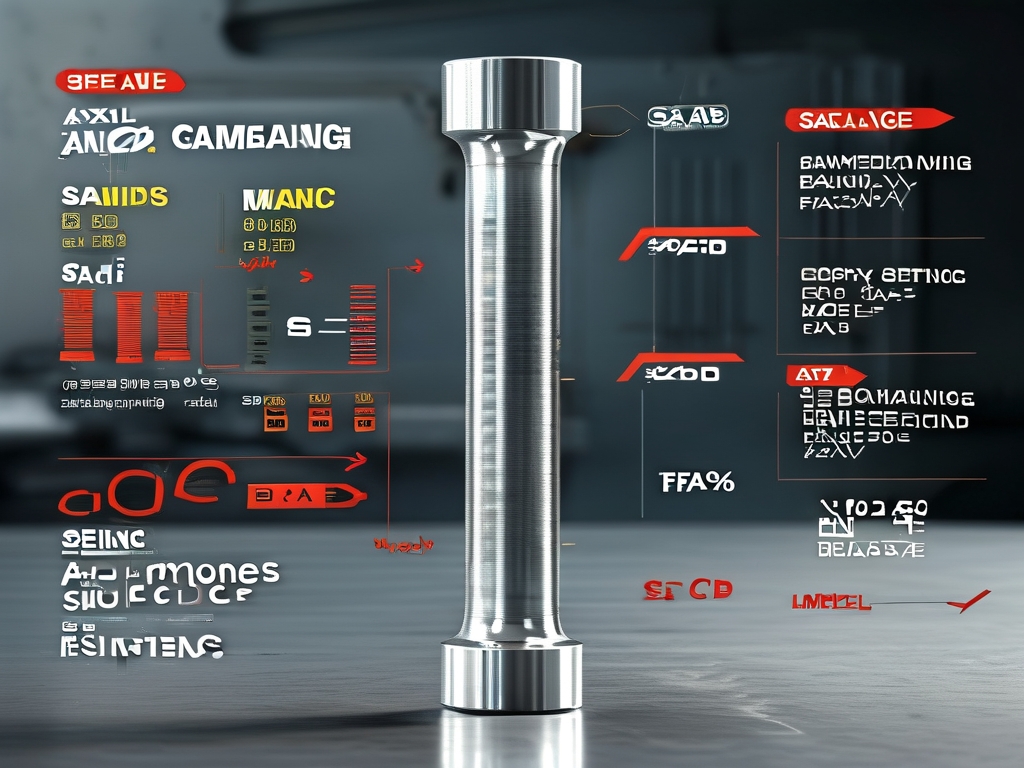In mechanical engineering, shaft strength calculation forms the cornerstone of reliable rotating equipment design. As critical load-bearing components in machinery, shafts require meticulous evaluation to ensure structural integrity under various operational conditions. This article explores three fundamental approaches for determining shaft strength while emphasizing practical implementation considerations.
The static strength calculation method remains the primary technique for initial shaft dimensioning. Engineers typically apply modified forms of the maximum shear stress theory (Tresca criterion) and distortion energy theory (von Mises criterion) to account for combined loading scenarios. A practical formula often used is:
τ_max = (16T)/(πd³) + (4F)/(πd²)
Where T represents torque, F denotes axial force, and d indicates shaft diameter. This simplified model helps establish baseline dimensions before progressing to more sophisticated analyses. Material yield strength serves as the key reference value, with safety factors ranging from 1.5 to 3.0 depending on application criticality.
Fatigue strength analysis becomes imperative for shafts subjected to cyclic loading. The modified Goodman diagram provides a robust framework for evaluating alternating stresses:
σ_a/S_e + σ_m/S_ut = 1/n
Here, σ_a signifies alternating stress amplitude, σ_m denotes mean stress, S_e represents endurance limit, and S_ut indicates ultimate tensile strength. Surface finish coefficients (Kf) and size correction factors (Kd) must be incorporated to adjust theoretical calculations for real-world conditions. Case studies show that 60% of shaft failures in industrial applications originate from unaccounted fatigue mechanisms.
Advanced numerical methods like finite element analysis (FEA) have revolutionized shaft design validation. Modern software packages enable multi-axis stress simulation while considering temperature gradients, bearing interactions, and dynamic loading patterns. A typical FEA workflow involves:
- 3D modeling with precise fillet radii
- Meshing refinement at stress concentration zones
- Non-linear material property assignment
- Transient load scenario configuration
Experimental verification remains crucial despite computational advancements. Strain gauge measurements on prototype shafts often reveal stress distribution discrepancies of 12-18% compared to theoretical predictions, necessitating empirical correction factors.
Surface treatment techniques significantly influence ultimate shaft strength. Shot peening processes can enhance fatigue life by up to 40% through induced compressive surface stresses. Similarly, case hardening methods like carburizing create wear-resistant surfaces while maintaining ductile cores – a critical balance for gears and splined shafts.
Industry standards provide essential guidance for calculation method selection. The ASME B106.1M standard specifies:
- Minimum safety factors for different service classes
- Combined stress equations for fluctuating torsional loads
- Allowable deflection limits based on bearing types
Emerging trends integrate machine learning algorithms with traditional calculation methods. Predictive models trained on historical failure data can identify high-risk design configurations with 89% accuracy, though human expertise remains vital for interpreting results.
Environmental factors frequently challenge conventional calculation assumptions. Subsea applications demand corrosion allowance adjustments, while aerospace shafts require specialized creep calculations for high-temperature operation. A 2023 study revealed that 22% of shaft failures in renewable energy systems stem from unanticipated wind gust harmonics.

Material selection continues to evolve alongside calculation methodologies. The growing adoption of high-strength composites and additive-manufactured alloys necessitates modified failure criteria. For instance, carbon fiber-reinforced shafts exhibit anisotropic properties that invalidate traditional isotropic material assumptions.

Effective shaft design ultimately balances theoretical rigor with practical adaptability. While advanced calculation methods provide valuable insights, seasoned engineers emphasize the importance of:
- Conservative safety margins for unknown variables
- Regular lubrication regime analysis
- Real-time vibration monitoring integration
- Periodic non-destructive testing protocols
As industrial demands push machinery toward higher speeds and lighter weights, the evolution of shaft strength calculation methods will remain pivotal in achieving optimal performance without compromising reliability. Future developments may focus on quantum computing-assisted simulations and self-optimizing shaft systems embedded with sensor networks.
